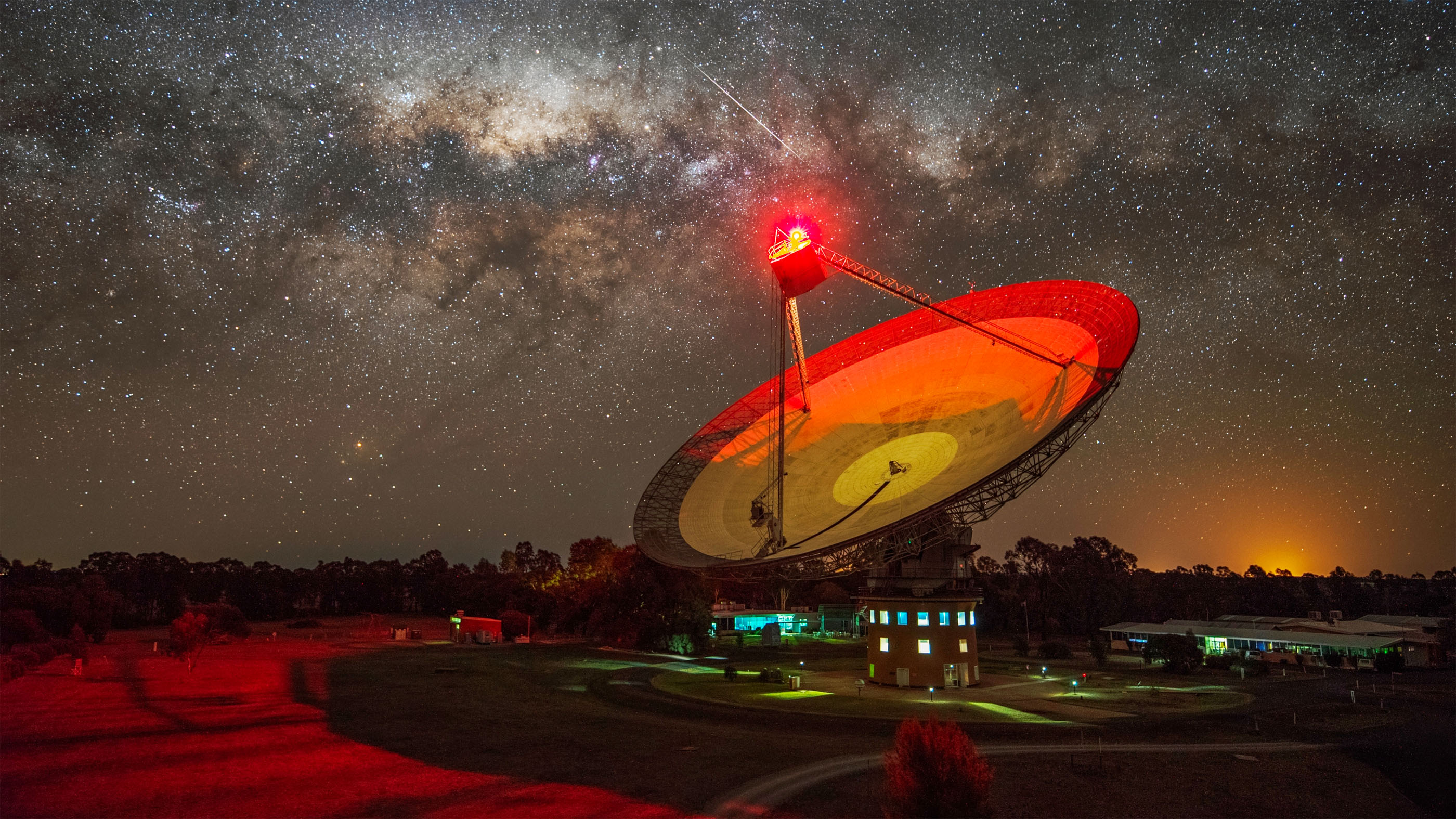Alien hunters detect mystery signal coming from the closest star system

Astronomers hunting for radio signals from alien civilizations have detected an "intriguing signal" from the direction of Proxima Centauri, the nearest star system to the sun, The Guardian reported.
The researchers are still preparing a paper on the discovery, and the data has not been made public, according to The Guardian. But the signal is reportedly a narrow beam of 980 MHz radio waves detected in April and May 2019 at the Parkes telescope in Australia. The Parkes telescope is part of the $100 million Breakthrough Listen project to hunt for radio signals from technological sources beyond the solar system. The 980 MHz signal appeared once and was never detected again. That frequency is important because, as Scientific American points out, that band of radio waves is typically lacking signals from human-made craft and satellites.
Related: From Big Bang to present: Snapshots of our universe through time
Breakthrough Listen detects unusual radio signals all the time — between Earthly sources, the sun's natural radio output and natural sources beyond the solar system, there are a lot of radio waves bouncing around out there. But this signal appears to have come directly from the Proxima Centauri system, just 4.2 light-years from Earth. Even more tantalizing: The signal reportedly shifted slightly while it was being observed, in a way that resembled the shift caused by the movement of a planet. Proxima Centauri has one known rocky world 17% larger than Earth, and one known gas giant.
The Guardian quoted an unnamed source with apparent access to the data on this signal as saying "It is the first serious candidate for an alien communication since the 'Wow! Signal,'" a famous radio signal detected in 1977 that also resembled a technosignature. But the Guardian cautioned that this signal is "likely to have a mundane origin too."
Such more mundane sources include a comet or its hydrogen cloud, which also could explain the Wow! Signal.
Penn State University's Sofia Sheikh, who led the analysis of the signal for Breakthrough Listen, voiced her excitement about it: "It's the most exciting signal that we've found in the Breakthrough Listen project, because we haven't had a signal jump through this many of our filters before," Sheikh told Scientific American, adding that the signal is now being referred to as Breakthrough Listen Candidate 1, or BLC1.
Sign up for the Live Science daily newsletter now
Get the world’s most fascinating discoveries delivered straight to your inbox.
Related: 9 strange, scientific excuses for why humans haven't found aliens yet
An inherent challenge in searching for alien communications is that no one knows how aliens might communicate, and no one knows all the potential natural sources of radio waves in the universe. So when signals arrive that seem even plausibly technological and don't come with easy natural explanations, it's tempting to make the jump to aliens. So far, no data on this signal is public, and it's likely that even when it does become public there will be no conclusive answers; that's what happened with the Wow! Signal after all.
Originally published on Live Science.










